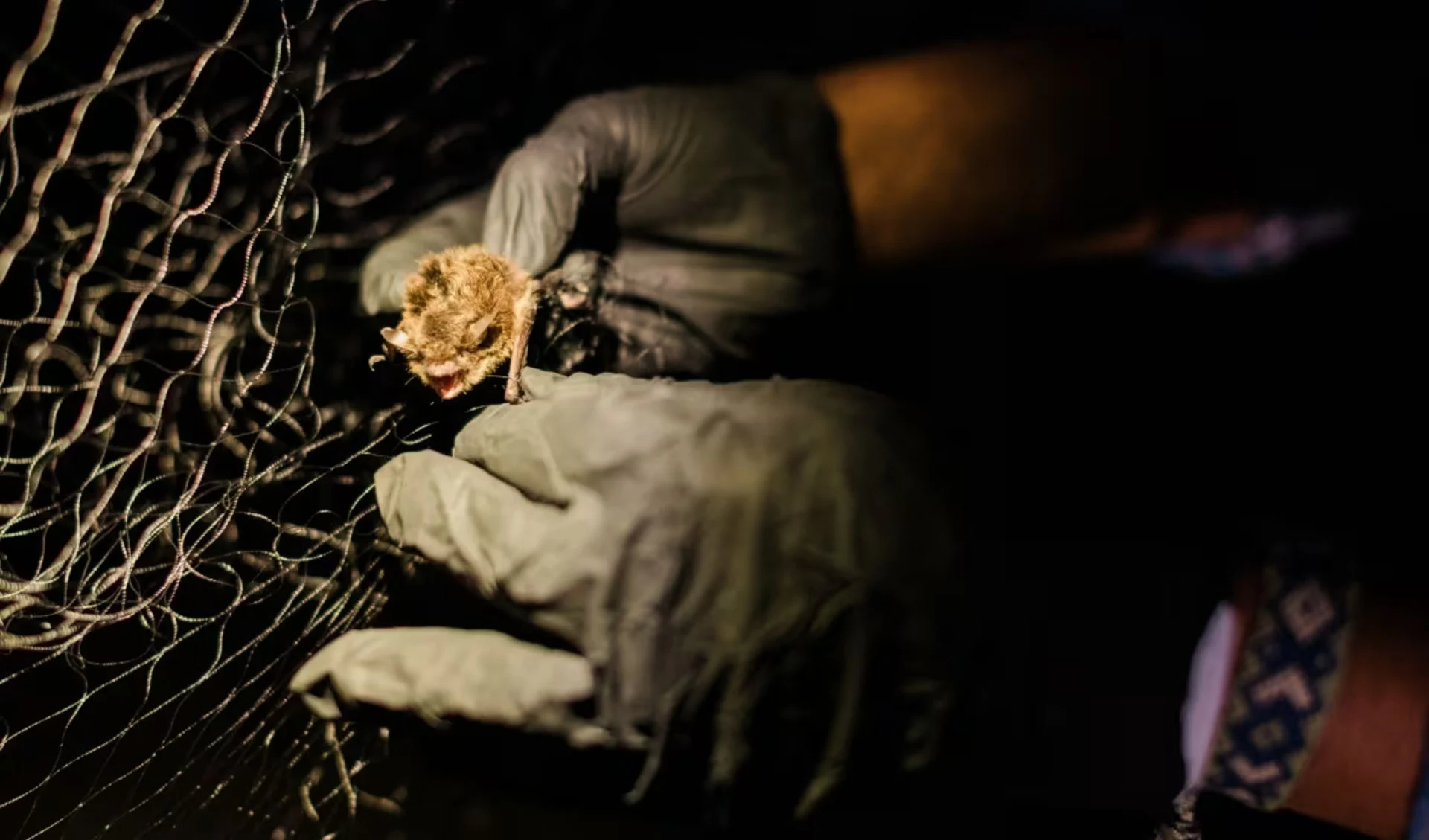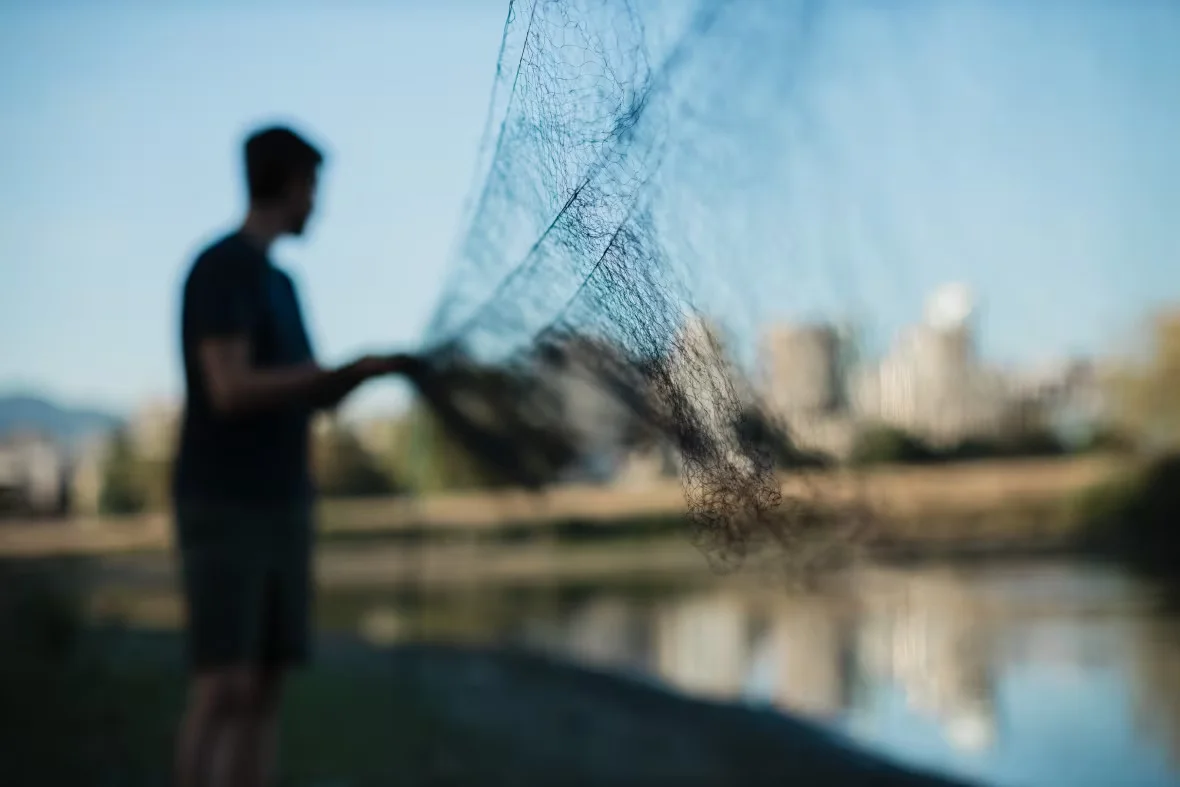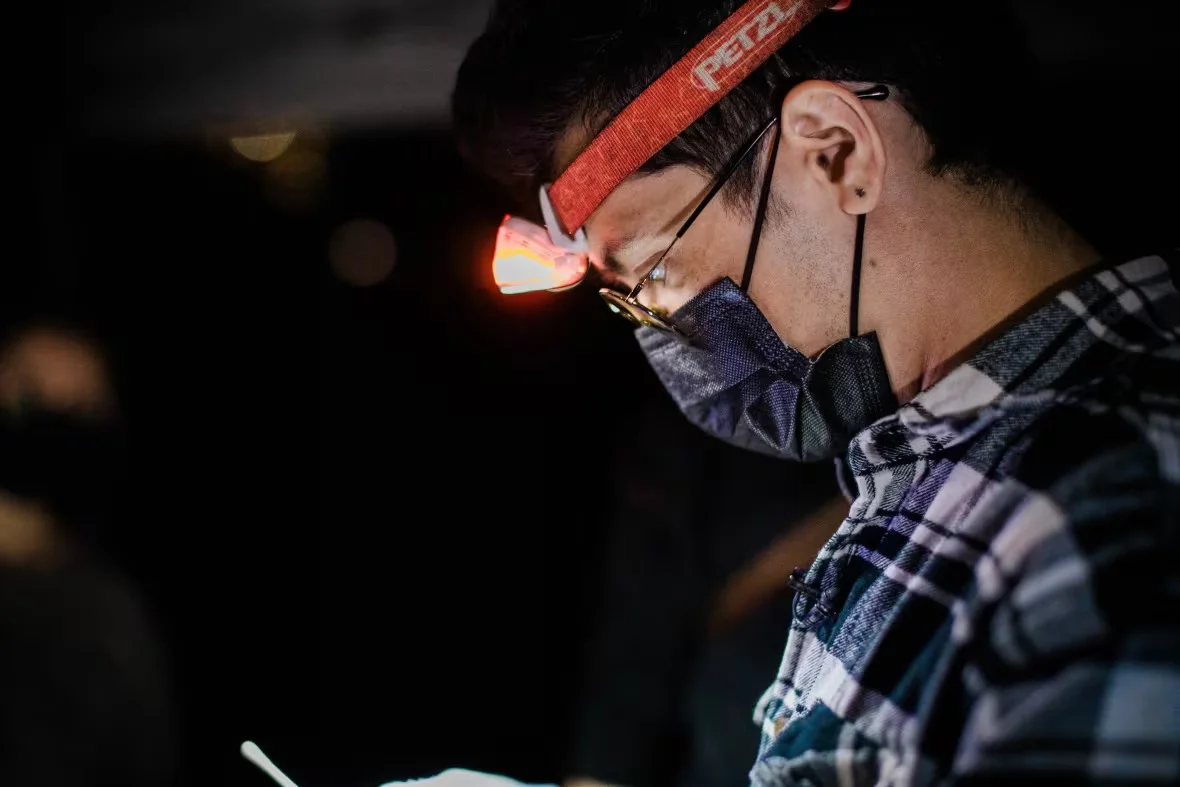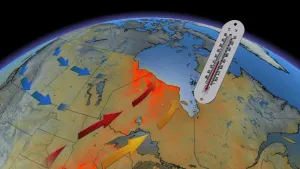
For researchers, an ideal night is spent chasing bats through Vancouver's parks
Around dusk on a balmy night in July, tiny winged animals zip through the fading sky above Vancouver's Vanier Park. Armed with a headlamp strapped to his forehead, bat researcher Aaron Aguirre rubs his gloved hands together with delight.
"Oh, I love this," he says, smile still clear from behind his black face mask. "I love getting my hands on bats."
Aguirre, 29, is part of a specialized team spending the summer gathering more information about the city's urban bat population to protect the mammals — and their billion-dollar benefit to the economy — as one of the deadliest wildlife diseases in North America creeps closer to the coast.
Researchers from the University of British Columbia (UBC) are capturing bats in at least 20 city parks so they can be tracked and tested for white-nose syndrome, a deadly disease caused by a fungus that feeds on the muzzle, ears and wings of hibernating bats.
White-nose syndrome detected in Kootenays
This summer, they need to gather baseline information so they have a starting point from which to track losses and potentially start preventative treatments should white-nose syndrome reach the city.
The fungus that causes white-nose syndrome was found in bat guano — or bat droppings — in B.C.'s Kootenays earlier this year.
The condition burns up fat the bats need to make it through the winter, leaving them to starve or freeze to death. The mammals can also wake up too early because the fuzz for which the disease is named is just uncomfortable — like trying to sleep with a bad case of athlete's foot all over your nose.
The disease, which spreads quickly between huddled bats, can wipe out up to 98 per cent of any given bat population.

Researchers from the University of British Columbia set up a mesh net at Vancouver's Vanier Park to catch bats on July 11, 2023. (Gian Paolo Mendoza/CBC)
RELATED: Great news: Canada's most endangered animal is making a comeback
"It was devastating to see," said Canadian National White-Nose Syndrome co-ordinator Jordi Segers, recalling an outbreak that killed most of the bat population in Nova Scotia nearly a decade ago.
"We were literally walking on corpses as we entered the cave. There were just thousands of dead bats lying on the ground there."
Natural pest control worth billions
Preserving the bat population is essential for the economy and environment in B.C. The mammals are pollinators and insect-eaters capable of devouring half their weight in bugs — including mosquitoes — in a single night. Their natural pest control saves Canada's agriculture and forestry sectors billions every year, according to Parks Canada.
Despite their benefits, there is little research available on urban bat populations.
At Vanier Park, the team wears face masks and rubber gloves to avoid any chance of infecting the bats with COVID-19.
They catch the bats with nets so fine the mesh is difficult for humans to see with the naked eye. Most of the bats in Vancouver are little brown bats — speedy, nocturnal animals that weigh about as much as a plastic credit card. They like to roost in human-made structures, but the species is now considered endangered because of its susceptibility to white-nose syndrome.

The University of British Columbia's Aaron Aguirre uses a swab on a bat to take a sample to be sent off to a lab on July 11 to determine whether the bat is infected with the fungus that causes white-nose syndrome. (Gian Paolo Mendoza/CBC)
SEE ALSO: Drought conditions threatening B.C. salmon as river levels drop
Once captured, the delicate animals are measured, weighed and swabbed. They're also milked to confirm whether they're lactating females.
Bigger bats are tagged with small radio telemetry tags to follow their movement and track where they sleep during the day.
"I would say it's pretty urgent," said Matthew Mitchell with UBC's Faculty of Land and Food Systems, referring to the research underway.
"Especially here where the bats and particularly the urban bats are fairly understudied, we really want to get a handle on what these populations are like, what their ecology is like, where they're spending their time before we start seeing bats with white-nose syndrome."
White-nose syndrome first appeared in North America in 2006 in New York state, probably through shipping. It's spread mostly bat to bat, although humans can play a role by carrying spores on their clothes or gear. There is no cure for the disease, but there are preventative treatments.
"It's hard to predict exactly what will happen if we lose bat species. There's lots of other things going on in urban landscapes, the climate change, people changing the landscape, all of those sorts of things," said Mitchell.
"But I would also just be really sad if there weren't bats around."
Thumbnail courtesy of Gian Paolo Mendoza/CBC.
This article was originally written for CBC News.









